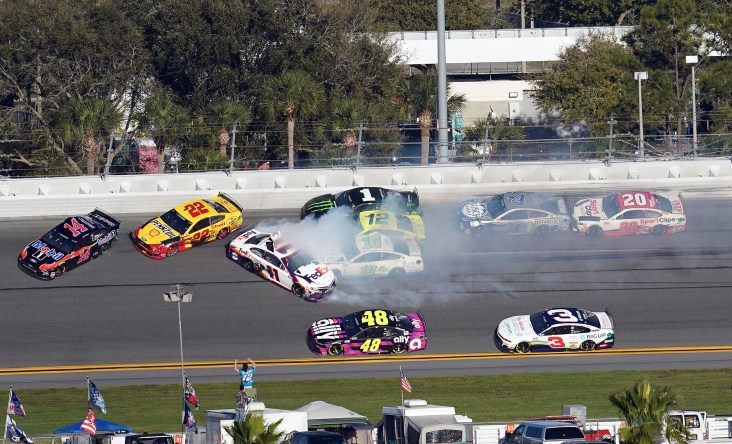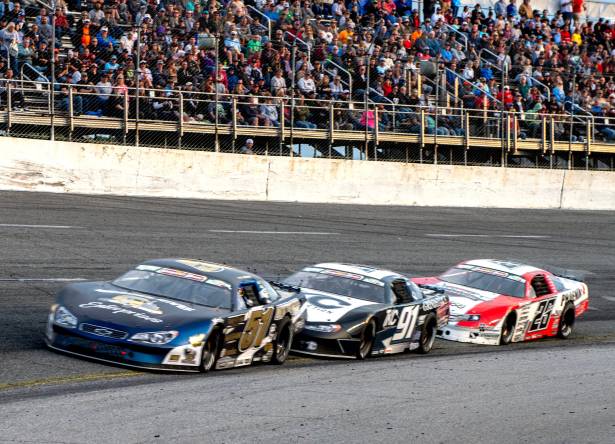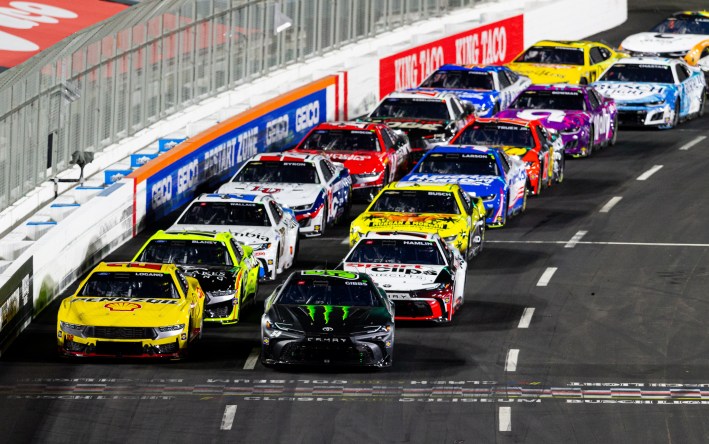
To understand where the Busch Clash might go in 2025, it’s important to recognize what it has attempted to accomplish over the past three years.
It was objectively time to move the race away from Daytona International Speedway after 2020, and the road course race of 2021 was just a COVID era placeholder, all with eyes towards the Clash at the Coliseum concept that coincided with the debut of the futuristic NextGen car.
The race lacked identity and purpose, and more importantly, had become a fruitless exercise that accomplished nothing but destroying race cars in front of an increasingly smaller audience of diehards that were going to watch the Daytona 500 anyway.
Remember, the Busch Clash was originally crafted as a sprint race amongst pole winners from the previous season to drum up interest in the Great American Race the next week but the exhibition had become largely perfunctory.
It was just something we had always done.

Nostalgia is a hell of a drug and one that NASCAR recognizes as a tangible needle mover in returning to North Wilkesboro Speedway for the All-Star Race or in the continued existence of a throwback weekend at Darlington, even if the latter is starting to run its course too.
And that’s really what this is about.
NASCAR can simultaneously pay tribute it to its past with the All-Star Race while looking to the future with events like the Clash at the Coliseum and the Chicago Street Race. So, when folks say NASCAR needs to take the Clash back to Daytona or run it at a true short track, of which most are in the middle of nowhere, what are the goals?
You’re either building towards something or you’re growing stagnant and NASCAR was the latter over the previous decade — too risk averse to really try anything new in the pursuit of growth.
The All-Star Race needs to continue serving as something of a Field of Dreams Game style event that rotates amongst historic grassroots venues in need of structural improvement around the country.
North Wilkesboro Speedway is destined to become a points paying race and hopefully, by next year, Speedway Motorsports will have an agreement in place with the City of Nashville to restore and promote Fairgrounds Speedway.
It’s the natural next step for this iteration of the All-Star Race.
But like the Clash at the Coliseum, it also checks off the box of being located within a downtown setting, with the ability to reach both hardcore stock car fans and new demographics. NASCAR can continue serving both audiences, simultaneously.
After Nashville, imagine an All-Star Race that rotates from short track to short track, investing in structural improvements necessary for a one-off Cup Series exhibition while also providing a cleaner and safer venue for decades of grassroots racers.
It’s a concept shared by Cup Series crew chief Chris Gabehart and spotter Frankie Kimmel too.
Hickory Motor Speedway
Five Flags Speedway
Stafford Motor Speedway
Berlin Raceway
Winchester Speedway
Slinger Super Speedway
Wisconsin International Raceway
Evergreen Speedway

Think of all the short tracks in markets that the NASCAR Cup Series would never otherwise reach, providing a once-in-a-lifetime chance for each location to see an All-Star Race while also delivering a compelling TV show in the process.
That should be the format for the All-Star Race but not the Clash, which has proven for the past three years that it can reach a different demographic and even turn a handful of them into new diehards. For this sport to grow, the show has to be taken to the masses because the masses are just not going to travel en masse to a rural race track anymore.
That’s also the model for a rotating street course event.
So, NASCAR is surely exploring Mexico City for the next iteration of the Clash at the Coliseum and that is certainly a market that can host an outdoor race in late January. It’s no secret that NASCAR wants to push further into international markets, coming close to taking the Cup Series to Circuit Gilles Villeneuve in Montreal, Quebec in 2024.
That seems just as likely for 2025 as well.

Ultimately, if you are a hardcore traditional NASCAR fan, the sanctioning body more or less gives you 30 events a year designed for you on ovals large and small from coast-to-coast. The general recipe that makes up the NASCAR Cup Series fundamentally hasn’t changed that much even if stages or the playoff format is a flavor that doesn’t hit with the entire restaurant.
But the Clash, unlike the All-Star Race, probably shouldn’t go to true short tracks and it certainly doesn’t need to go back to Daytona for more than the occasional nostalgia trip. It’s one of the handful of races that NASCAR concedes isn’t for the diehards but is absolutely in the pursuit of creating new ones.
And at the end of the day, if you’re a hardcore NASCAR fan, how could you really dislike Cup drivers trading paint on a quarter mile once you separate the notion that it is in a city or possibly country that you simply cannot identity with?
The Clash for the past three years has basically been a race at Bowman Gray Stadium but inside of the second largest market in the United States; and if you don’t think there is an audience for that kind of racing, remember that The Stadium draws over 10,000 fans each summer to watch its brand of stock car racing.
The Clash at the Coliseum was designed to serve a lot of different masters over the past three years.
It set out to bring a race to an urban demographic that wasn’t otherwise going to drive an hour to Auto Club Speedway in Fontana. It was designed to take place on a compelling short track reminiscent of Late Model events all over the country. It was meant to be a flamboyant television show with mainstream pop culture stars in the pursuit of crossover appeal.
If you don’t think there is merit there, pay attention to the business that Taylor Swift is doing for the NFL right now, and that developed somewhat organically.
NASCAR entered this decade with an increasingly geriatric foundational demographic and it simply was not sustainable. It needed to appeal to a much younger audience while also following the trend of mainstream sports exploring international growth.
That it has done so while also in the pursuit of paying homage to its past at venues like Wilkesboro, Darlington and Nashville Fairgrounds is admirable and something it doesn’t get enough credit for.
From that standpoint, the past three years, across the Los Angeles Memorial Coliseum, Streets of Chicago and the North Carolina foothills have been widely successful.
It remains an open question to what comes next but this beats the hell out of the stagnant decade that preceded it.
Matt Weaver is a Motorsports Insider for Sportsnaut. Follow him on Twitter.
